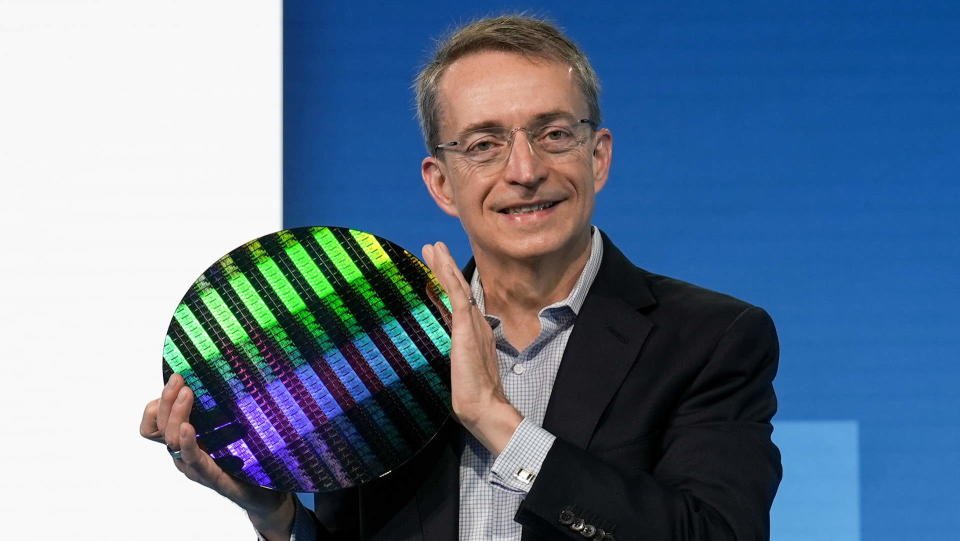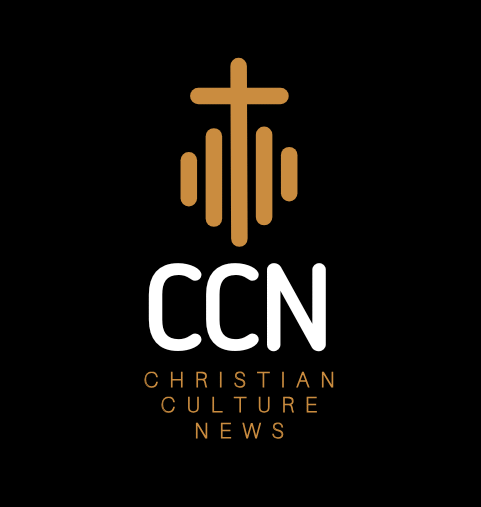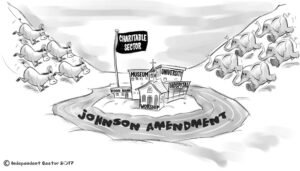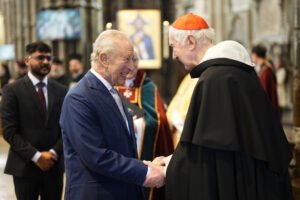Pat Gelsinger: From Intel CEO to Executive Chairman of a Faith-Driven Technology Platform

Introduction to Pat Gelsinger
Pat Gelsinger is a prominent figure in the technology sector, known for his significant contributions and leadership in various high-profile roles. As the former CEO of Intel Corporation, Gelsinger played a pivotal role in steering the company through a transformative period characterized by rapid technological advancement and intense competition. With a solid educational foundation, earning his bachelor’s degree in electrical engineering from Santa Clara University and a master’s degree in management from the University of California, Berkeley, he established himself as a knowledgeable and strategic leader in the field.
Gelsinger’s career at Intel began in 1979, where he quickly distinguished himself through his technical acumen and innovative thinking. He contributed to the development of key technological advancements, including the x86 microprocessor architecture, which has become a cornerstone of modern computing. Over the course of his tenure at Intel, Gelsinger held several significant positions, culminating in his role as CEO from 2021, where he was celebrated for implementing a comprehensive overhaul of the company’s manufacturing processes and product portfolio.
Beyond his time at Intel, Gelsinger also served as the CEO of VMware, a leading cloud and virtualization technology company. There, he helped redefine the landscape of enterprise software, expanding VMware’s influence and fostering a culture of innovation. His experience at VMware provided him with a unique perspective on the intersection of technology and business, which he would later channel into his endeavors at Intel.
Gelsinger’s vision for the future of technology is deeply rooted in his belief in ethical leadership and faith-driven principles. As he transitions into the role of Executive Chairman of a faith-driven technology platform, he seeks to inspire a new generation of leaders and innovators to merge technology with purpose, thus exemplifying the profound impact of conscientious leadership in the ever-evolving tech landscape.
Gelsinger’s Transition from Intel to Faith-Based Technology
Pat Gelsinger’s career metamorphoses have often been marked by pivotal decisions that reflect his values and vision for the future. His recent shift from the position of CEO at Intel to Executive Chairman of a faith-driven technology platform demonstrates a profound change in both focus and purpose. This transition is not merely a career shift; it embodies Gelsinger’s belief in the power of technology as a force for good, particularly within the faith ecosystem.
One of the primary motivations behind Gelsinger’s move is his desire to integrate his professional expertise with his deeply held convictions. Throughout his career, he has been an advocate for the responsible use of technology and has expressed a vision wherein technology serves humanity in a meaningful way. By leading a faith-based technology platform, he can harness his extensive experience in technology to address the unique challenges and opportunities that arise within faith communities. This blend of faith and technology can foster innovation and enhance outreach efforts within these communities, enabling them to leverage modern tools for spiritual growth and community building.
The significance of merging faith with technology is paramount, particularly as society navigates an increasingly digital landscape. Gelsinger recognizes that technology can catalyze profound transformation, not only in how individuals engage with their faith but also in how religious organizations operate. His leadership role places him in a unique position to champion initiatives that promote ethical and purposeful technology usage in a manner that aligns with spiritual values. Combining his robust technical background with a commitment to uplifting faith-based initiatives exemplifies a holistic approach to leadership that seeks not only profit but also positive societal impact.
In embracing this new venture, Gelsinger draws upon his rich history at Intel, where he cultivated a culture of innovation and excellence. This experience equips him with the skills necessary to navigate the complexities of merging these two realms. As he embarks on this new journey, the intersection of faith and technology remains a compelling narrative that holds promise for the future of both sectors, demonstrating how leaders can redirect their paths to align closely with their personal and professional aspirations.
Overview of the Technology Platform
The technology platform led by Pat Gelsinger is at the forefront of integrating faith with innovation in the digital landscape. Its mission is to serve as a bridge, connecting the faith ecosystem with contemporary technological advancements, providing tools and resources to enhance the spiritual journey of individuals and communities. Recognizing that technology can play a pivotal role in fostering faith and community connections, the platform aims to empower users to engage with their beliefs through innovative digital solutions.
The vision that underpins this initiative is one where technology becomes an enabler for faith-based organizations and individuals to thrive in a digital world. The platform seeks to cultivate a sense of belonging and support among various faith communities, promoting collaboration and unity amidst a diverse landscape of beliefs. This inclusive approach is crucial as it acknowledges the variety of religious expressions and aims to provide customizable solutions that cater to differing needs.
To achieve its goals, the platform intends to launch a series of initiatives that focus on education, outreach, and community engagement. These initiatives will include digital training programs for faith leaders, developing apps that assist with spiritual growth, and creating online forums for dialogue and discussion. Additionally, the platform will leverage data analytics to understand the needs of faith communities better and develop targeted solutions that align with their unique challenges.
This endeavor also aims to showcase successful case studies where technology has been instrumental in enhancing faith practices, thereby encouraging wider adoption of such tools. Through these multifaceted strategies, the technology platform aspires to create a lasting impact on the intersection of faith and technology, paving the way for a future where every individual can seamlessly integrate their beliefs within the digital context.
The Role of Christian AI in Today’s Society
The intersection of artificial intelligence and faith has become increasingly significant in contemporary society. As technological advancements evolve, the concept of Christian AI arises, reflecting the integration of spiritual principles with cutting-edge technology. This synthesis raises important questions about the ethical implications of artificial intelligence, particularly when it serves not just economic or operational functions, but also deep-seated spiritual needs.
Christian AI refers to the application of artificial intelligence in ways that align with Christian values and principles. This might include tools designed to enhance communal worship experiences, assist in theological education, or provide resources for spiritual development. By leveraging AI technologies, faith communities have the potential to create platforms that can foster deeper connections among believers, enhancing the communal aspect of faith practice. For example, AI algorithms can curate personalized devotional materials or facilitate online fellowship, bridging gaps in physical worship environments.
The ethical considerations surrounding Christian AI are complex. As technology becomes increasingly embedded in religious practices, it prompts discussions about morality, accountability, and the essence of faith itself. Practitioners and theologians alike are called to engage with these complexities, ensuring that the development and application of AI technologies remain rooted in ethical guidelines consistent with Christian teachings. Balancing innovation with integrity will be crucial as faith organizations reflect on how to responsibly incorporate technology into spiritual life.
In summary, the role of Christian AI is not just about technology in a vacuum; it is a holistic endeavor to support the spiritual growth of individuals and communities. By aligning artificial intelligence with faith-driven objectives, the technological landscape can serve as a powerful ally for believers, ultimately enhancing their spiritual journeys. As society progresses, embracing ethical and faith-centered uses of AI will be key to nurturing a harmonious relationship between technology and Christian values.
DeepSeek: The Technology Behind the Vision
DeepSeek represents a significant advancement in the intersection of technology and spirituality, providing a platform that is both innovative and purpose-driven. At its core, DeepSeek is designed to facilitate the exploration of faith in a modern context, harnessing advanced technologies to create an engaging environment for users. One of its standout functionalities is its intuitive search engine, which allows users to uncover resources that pertain to spiritual guidance, theological questions, and community support.
Users are empowered by features that enable personalized content curation. DeepSeek employs innovative algorithms that adapt based on individual preferences, ensuring that the information presented aligns with the user’s faith journey. This level of customization sets DeepSeek apart from traditional platforms, which often provide generic content. By analyzing user interactions, the platform continuously evolves, fostering a more enriching experience for its community members.
Moreover, DeepSeek incorporates interactive elements that encourage user engagement. Through forums, live discussions, and expert Q&A sessions, individuals can connect with thought leaders, facilitating a deeper understanding of complex faith-related topics. This interactive component not only enhances learning but also fosters a sense of belonging among users, contributing to the development of a vibrant faith community.
Another unique offering of DeepSeek is its commitment to integrating technology with faith-based metrics. This insight allows leaders within the faith ecosystem to assess the impact of their initiatives, tailoring their outreach efforts based on data-driven perspectives. In an age where technology and spirituality often seem at odds, DeepSeek emerges as a beacon of possibility, paving the way for a future where faith and technology coexist harmoniously to enrich lives.
Gelsinger’s Vision for the Future of Faith and Technology
Pat Gelsinger envisions a future where technology and faith are not only compatible but also mutually enriching. As the CEO of Intel and now as the Executive Chairman of a faith-driven technology platform, Gelsinger brings a unique perspective to the rapidly evolving landscape of artificial intelligence and its implications for society. His aim is to develop AI technologies that align with Christian values, emphasizing ethical practices and the enhancement of human experience.
One of Gelsinger’s primary aspirations is to create technological solutions that promote community and fellowship among believers. By leveraging advanced AI and machine learning capabilities, he intends to foster platforms that enable individuals to connect with each other, share their faith journeys, and grow spiritually together. This integration of technology aims to enhance worship experiences, provide access to biblical resources, and guide individuals in their spiritual growth through personalized recommendations and insights.
Furthermore, Gelsinger highlights the importance of ethical considerations in the development of technology. He believes that as technologists endeavor to create innovative solutions, they must remain vigilant about the impact of their work on society. By rooting technological advancements in Christian principles such as love, compassion, and integrity, Gelsinger sees an opportunity to influence the tech industry positively, steering it toward outcomes that benefit all of humanity.
In addressing social and moral issues, Gelsinger advocates for a responsible approach to AI development, striving to prevent misuse and reduce harm. His vision extends beyond mere technological enhancement; it encompasses a holistic view that seeks to integrate faith into everyday technology, making spirituality a seamless part of modern life. This vision represents a commitment to enriching the human experience through thoughtful technological innovation, thereby contributing to a deeper and more meaningful faith experience.
Potential Impact on the Faith Community
Pat Gelsinger’s transition from CEO of Intel to Executive Chairman of a faith-driven technology platform represents a significant opportunity for the faith community to leverage the advancements in technology. This initiative is likely to empower churches, ministries, and individual believers, facilitating more profound engagement and outreach.
One of the primary challenges faced by contemporary faith organizations is the effective communication of their messages in an increasingly digital world. The technology platform that Gelsinger is overseeing can potentially serve as a bridge between traditional religious practices and modern communication methods. By integrating faith-centric tools and resources, this platform may enable churches to reach a broader audience, effectively transmitting their teachings, values, and community activities. Digital outreach can particularly benefit marginalized or remote communities, allowing them to connect with their faith despite geographical constraints.
Moreover, the introduction of innovative technological solutions can streamline church operations, enhancing management capabilities for ministries. This could involve tools for event planning, donation management, and community engagement, thereby increasing administrative efficiency. Consequently, church leaders can focus more on spiritual guidance rather than on backend logistics. Additionally, the platform might foster collaboration between different churches and ministries, creating a network where resources, experiences, and insights are shared, enriching the collective faith experience.
The potential for greater engagement through technology also presents an opportunity for personal growth among believers. With access to online resources such as sermons, faith-based discussions, and spiritual mentoring, individuals can deepen their understanding and practice of their faith in a supportive environment. This connection can enhance their spiritual journey and encourage participation in community activities, ultimately leading to a more vibrant faith community.
In conclusion, Gelsinger’s role in this faith-driven technology platform could significantly impact the faith community by fostering greater engagement, enhancing operational efficiency, and contributing positively to personal spiritual growth. This initiative embodies a convergence of faith and technology, providing numerous opportunities for believers and organizations alike.
Challenges and Ethical Considerations
As technology continues to evolve at an unprecedented pace, the intersection of faith and technology presents a unique set of challenges and ethical dilemmas. In particular, the advent of artificial intelligence (AI) raises several pertinent questions related to data privacy and the moral implications surrounding machine learning algorithms. The seamless integration of faith-driven values with technological advancements necessitates a careful examination of how these elements can coexist without undermining either party.
One significant concern is data privacy. When technology platforms collect vast amounts of personal information to enhance user experience, individuals often sacrifice their privacy. This raises ethical questions about consent and the responsible handling of sensitive data, especially when the data in question relates to religious beliefs or personal values. Companies must navigate these dilemmas to ensure their practices align with both legal requirements and faith-centered principles. Ensuring transparency and obtaining informed consent are essential steps in promoting ethical standards in data collection.
Additionally, the ethical use of AI presents another challenge. As AI systems gain decision-making power, the potential for biased algorithms becomes a serious risk. This issue also calls into question the responsibility of technology leaders, such as Pat Gelsinger, who must instill a values-driven approach within their organizations. By prioritizing ethical considerations, these leaders help mitigate the risks associated with AI, ensuring that technology serves humanity while upholding spiritual values rather than overshadowing them. Striking a balance between innovation and ethics is crucial as we navigate the ever-changing landscape of faith-driven technology.
Conclusion: The Intersection of Faith and Innovation
Pat Gelsinger’s journey from CEO of Intel to Executive Chairman of a faith-driven technology platform marks a significant shift not only in his career but also in the broader conversation about the intersection of faith and innovation. His commitment to integrating technology with spiritual values underscores a growing recognition of the role that faith can play in guiding ethical decisions within the tech industry. This transition suggests a new model of leadership that combines technical acumen with moral integrity, prompting a reevaluation of how executives can influence the technology landscape.
Throughout this blog post, we have explored how Gelsinger’s leadership style and vision reflect a transformative approach to fostering innovation that aligns with values rooted in faith. By championing a platform that emphasizes ethical considerations, Gelsinger invites stakeholders in technology to reconsider their responsibility to society. This articulation of faith as a driving force behind technological advancement encourages a dialogue about how personal beliefs can influence corporate strategies and societal impacts.
Moreover, the relationship between faith and innovation is increasingly relevant in today’s world, as emerging technologies continue to reshape everyday life. The imperative for leaders to intertwine personal convictions with professional endeavors becomes clearer as society navigates complex moral dilemmas presented by advancements in artificial intelligence, data privacy, and digital ethics. As we reflect on these themes, it is crucial for readers to contemplate their own views on the juxtaposition of faith and technology.
In this evolving landscape, Gelsinger’s vision serves as a reminder that faith and innovation are not mutually exclusive but can coexist harmoniously to create solutions that uplift society. This fusion offers a pathway to responsible innovation that respects human dignity, guiding future tech leaders to think critically about the implications of their creations. Encouraging a collaborative dialogue around these subjects may indeed foster a more thoughtful and ethically driven tech community.












Leave a Reply
You must be logged in to post a comment.